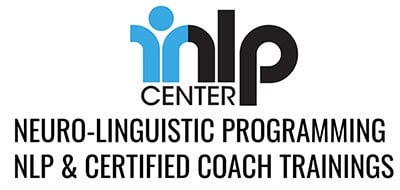You’re a life coach.
Clients come and talk to you about their goals, obstacles in the way, and various elements of their lives. Your goal is to facilitate a transformation. If the life coaching is successful, your clients apply new insights and resources to their daily life and their personal power increases.
Filtering through the information clients provide can be overwhelming.
It’s easy to get lost. How does a life coach know which information is important and which is a detail that can be set aside?
In this post, we’ll offer a strategy, using NLP and life coaching tools from the iNLP Center NLP and life coach certification course.
If we’re successful, then no matter how much information a client gives, the coach will:
• Remain calm and poised
• Be able to narrow down goals and obstacles with ease
• Facilitate a path forward that is genuinely helpful
To get there, we need one thing above all:
Coaching filters.
Coaching filters sort out relevant information. Without a filter, you cannot coach, period.
Listening for a goal – that’s a simple filter. When the client mentions a goal, you focus in on that to get more information, leaving the rest of what was said behind.
Identifying roadblocks – another simple filter. When the client mentions what might be an obstacle, you gather more information.
When you put goal and obstacle filters together, you end up with a simple coaching model like the iNLP Center Coach-Go model. Identify and specify the goal. Identify and specify the main obstacle in the way of the goal. Just knowing this specific and concrete information will provide a new world of clarity for the client.
The Top Coaching Filters for New Coaches
If you’re a new life coach, you’ll want to install filters into your thinking that keep the process clear and simple so that you don’t get lost. All of us need to do this, regardless of experience!
Here are some simple filters arranged as a protocol for new coaches to save yourself from information overload.
Everything you work on must be within the client’s control.
What can the client control? His or her own thoughts, feelings, and behavior. That’s it. When a business person comes in complaining about how his partner isn’t keeping agreements, you’ll know that in order to be productive, you’ll need to focus the session on what this man wants to do for his part.
It’s not that the partner’s behavior is irrelevant. It’s highly relevant! You and your client simply cannot change the partner directly. The coaching would be well-served to focus on what can be done, which is 100% in the court of your client.
Bite off what you can Chew in THIS SESSION
Successful life coaches are good at chunking information down to bite-size pieces. A coaching session is a bite, not a full-course meal. It’s super important for coaches to accept this!
As life coaches, we all want to be as helpful as possible. Sometimes we put all the pressure on ourselves to solve problems as clients present them. This is so often NOT feasible.
Chunk down.
Meaning, when a client presents multiple goals, such as:
I want to lose weight, start a business, improve my relationship and start feeling good about myself again.
That’s a full-course meal and then some. Don’t freeze! Chunk down.
Chunking down means choosing a smaller set of information. It’s not difficult. Imagine that you have three houses to clean. Thinking of all that cleaning, you get overwhelmed. You can’t get it all done immediately. Which house shall you begin with? One house of three is a smaller set of information.
Chunk it down further. Which room in that one house gets cleaned first?
As coaches, we’re regularly sorting out smaller chunks that we can address inside one single coaching session.
In the above example, choose one place to begin: losing weight, starting a business, improving a relationship, or feeling good about yourself again. One bit at a time.
Let’s talk about what to say to clients in order to chunk down wisely.
Hand choices to the client by presenting options.
It’s not your job as a life coach to make choices for your client. You’re not qualified and neither am I. Instead, offer choices by presenting the options you hear coming from the client.
In the above example, you say to the client:
Ok, you’ve got a few areas to address: losing weight, starting a business, improving your relationship, and feeling good about yourself. Which one would you like to address in this session?
It’s not your choice, You’re a facilitator of choices. As a life coach, you need not feel pressure. The direction of the coaching is up to the client. You can trust him or her to make the call.
These Three Life Coaching Filters Can Form an Approach to Coaching
With these coaching filters in place, you can create an overall approach to coaching your clients.
- Get the right chunk (something to address in this session).
- Have a single goal.
- Identify a single obstacle to the goal.
- Ask the client to choose among mentioned goals or obstacles.


